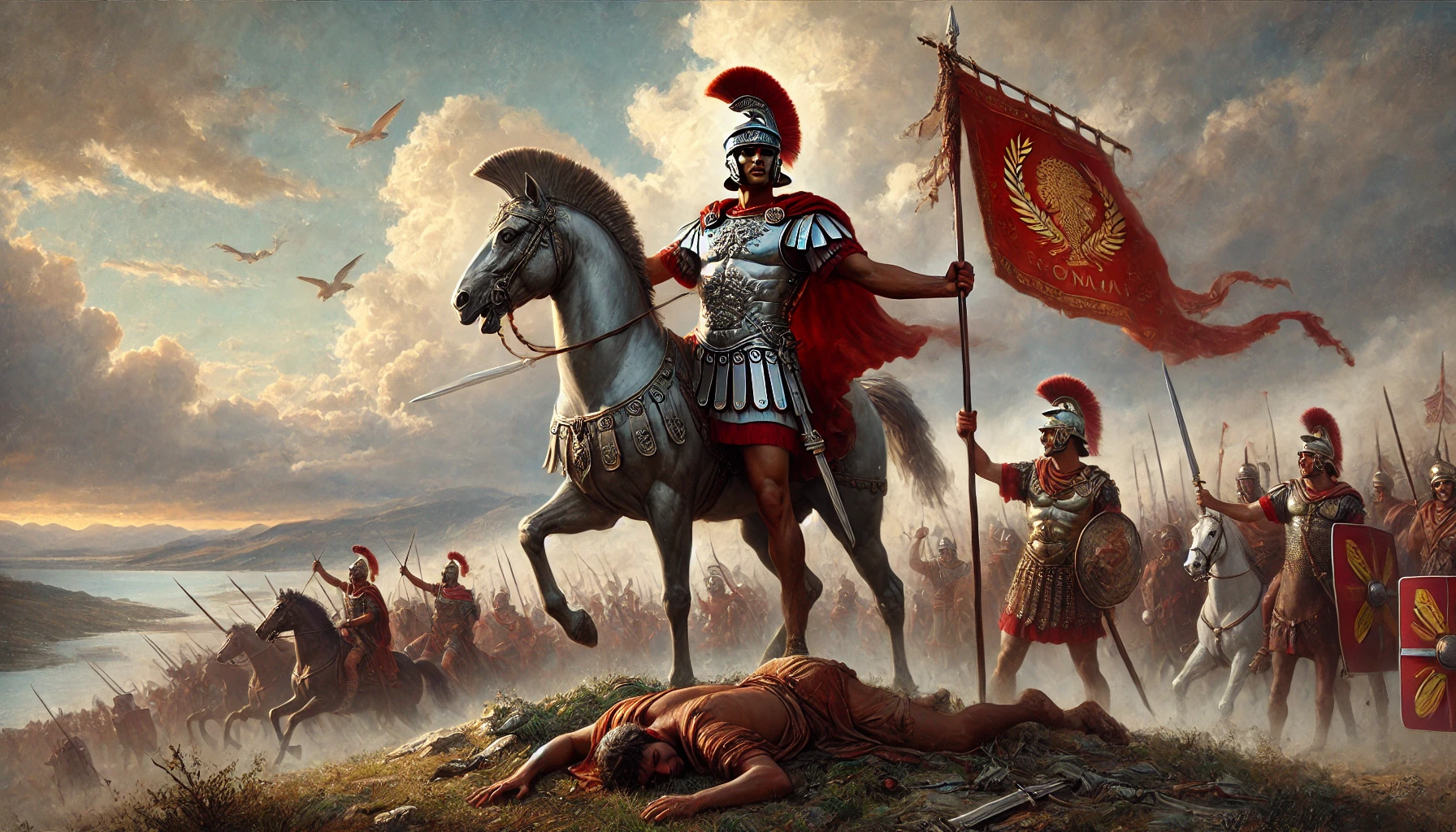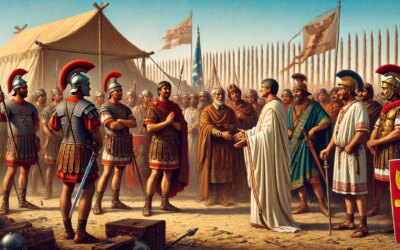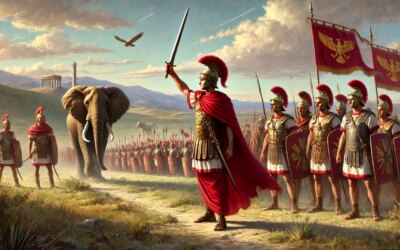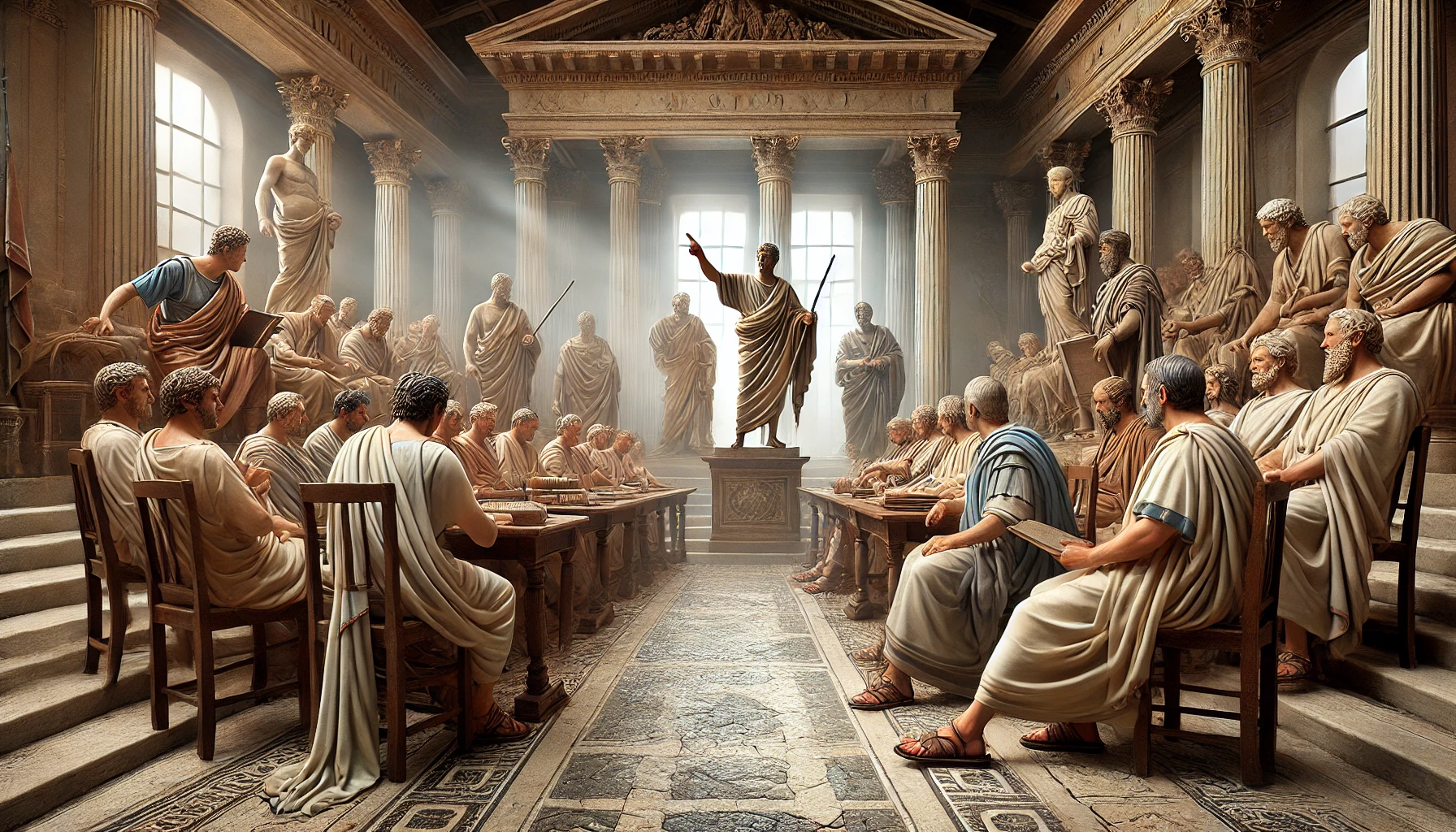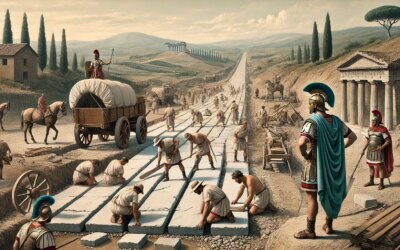Introduction: The Founding Legend of Roman Valor
In the year 496 BC, the fledgling Roman Republic stood at a crossroads. Barely a generation removed from the expulsion of its kings, Rome now faced a decisive confrontation with its neighbors: the Latin League. At the heart of this crisis was the Battle of Lake Regillus, a conflict immortalized in Roman lore not only for its military consequence but for the divine intervention that, according to tradition, turned the tide of battle. The Roman victory, led by consul Aulus Postumius Albinus, cemented the Republic’s early place in the Italian political order.
Backdrop to Conflict: Rome and the Latin League
After the fall of the monarchy in 509 BC, Rome’s relations with surrounding Latin towns deteriorated rapidly. Many Latin cities, still loyal to the exiled Tarquin kings or fearful of Roman expansion, aligned against the Republic. Tensions escalated into open war when the Latin League, under the command of Octavius Mamilius of Tusculum—son-in-law to the deposed king Tarquinius Superbus—marched on Roman territory.
Leadership and Strategy
The Roman Senate appointed Aulus Postumius Albinus as dictator, granting him supreme military command. With Lucius Julius as his magister equitum (master of the horse), Postumius rallied Roman forces to meet the Latin army near Lake Regillus, a location just southeast of modern-day Frascati. The battle pitted Rome’s disciplined citizen-soldiers against the elite warriors of the Latin cities in one of the earliest large-scale engagements of the Republic.
The Battle Unfolds
Sources such as Livy and Dionysius of Halicarnassus describe the clash in vivid, if semi-mythical, detail. The fighting was intense and chaotic, with cavalry charges, duels between commanders, and a fluctuating tide of victory. Roman morale reportedly faltered at several points, but Postumius’s presence and tactics—particularly his strategic use of the cavalry—proved decisive. According to legend, the Dioscuri twins, Castor and Pollux, appeared on the battlefield fighting for Rome, a divine endorsement of the Republic’s cause.
Postumius’s Heroism and the Roman Victory
Postumius, injured in battle, remained on the field to inspire his men. His willingness to sacrifice and his sharp commands in the thick of combat became part of the Roman ethos. Ultimately, the Latins were routed. Octavius Mamilius was killed, and the remnants of the Latin League’s forces retreated in disarray. Rome had not only won a military victory but had symbolically overcome the shadow of monarchy through republican valor.
Aftermath and Political Consequences
Following the battle, Rome signed a treaty with the Latin League that, for a time, established peace and cooperation. The victory at Lake Regillus significantly boosted Rome’s prestige and cemented its dominance in central Italy. It also strengthened the internal cohesion of the Republic, reaffirming the Senate’s authority and the legitimacy of its magistrates.
Legacy in Roman Culture
The Battle of Lake Regillus became a cornerstone of Roman mythology. The Temple of Castor and Pollux in the Roman Forum was dedicated in gratitude to the divine twins. Annual games and rites were held in their honor, and the image of twin horsemen galloping to Rome became a lasting symbol of divine favor and military courage.
Conclusion: Rome’s Coming of Age
Though steeped in legend, the Battle of Lake Regillus in 496 BC stands as a foundational moment in Roman history. It encapsulated the Republic’s defiance, its embrace of citizen-soldiers over monarchs, and its deep intertwining of faith and war. Aulus Postumius Albinus’s leadership not only secured a crucial victory but helped define what it meant to be Roman—for generations who would follow the path he helped forge.

